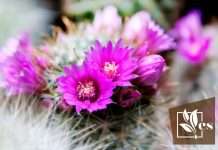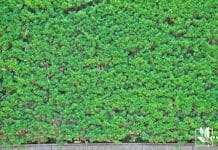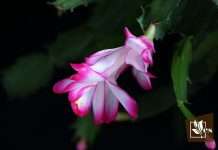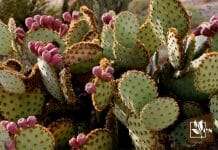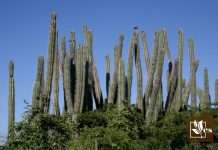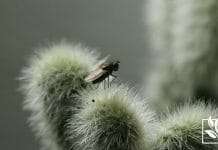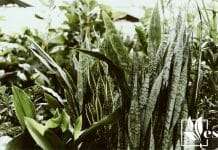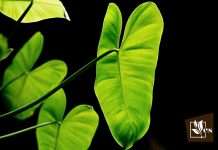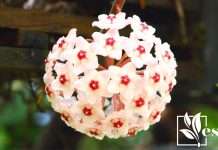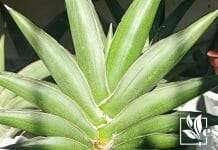- 6 Cactus Plants With Pink Flowers: Stunning & Little Effort - March 28, 2024
- 6 Alternative To String Trimmer: Useful Common Options - March 28, 2024
- Oil Coming Out of Lawn Mower Exhaust? Reasons and Fixes - March 28, 2024
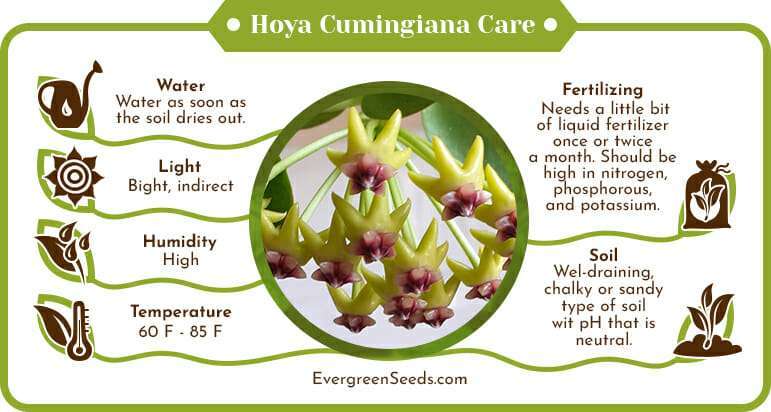 The Hoya cumingiana of the Apocynaceae family is a great addition to any indoor garden because of its unique appearance. They are also extremely easy to care for, so they make perfect houseplants for people who are new to gardening Hoya genus plants.
The Hoya cumingiana of the Apocynaceae family is a great addition to any indoor garden because of its unique appearance. They are also extremely easy to care for, so they make perfect houseplants for people who are new to gardening Hoya genus plants.
To make things even simpler for you, we have put together all the information you will need to raise a Hoya cumingiana plant properly.
So keep reading this comprehensive care guide.
JUMP TO TOPIC
Hoya Cumingiana Growth Requirements
Growing Hoya cumingiana plants is quite an easy and straightforward process. You just need to be careful of a few key factors like the amount of water and sunlight that the plant receives as well as the type of soil it is planted in.
We have listed in detail all the essential information about maintaining this plant. Simply follow these guidelines and enjoy watching these exotic plants bloom in your house!
 Water Requirements
Water Requirements
Getting the watering pattern right is the most important factor when it comes to growing a healthy wax plant. Since it is succulent, it does not require too much watering and actually prefers drier conditions. It is vital that you do not overwater it.
A good rule of thumb to remember is that it is best to let the soil become very dry before you water it again and pour out all the excess water from the bottom of the pot once you do water it again.
Letting the soil dry between watering ensures that the soil does not become waterlogged. This is because it is quite dangerous for a Hoya cumingiana plant to have its roots sit in water for too long, as it can lead to fungal root infections. So depending on the climate in your area, you can leave this plant unwatered for a few days to let the soil dry properly.
During the summer, it is necessary to water the plant when the soil dries out, but in the winter, a wax plant barely requires any watering. Just add a little water from time to time to soften the soil.
 Light Requirements
Light Requirements
If you are growing this plant indoors in a hanging basket, keep it in a room near a window that receives plenty of sunlight. Gentle early morning or evening sunlight is best for this plant and encourages it to grow. However, harsh afternoon sunlight may harm the plant, so make sure it is not in direct light in the afternoon.
If you plan to grow this plant outside in your garden, then put it under a green shade so that the Hoya cumingiana leaves do not scorch in the bright midday sunlight.
 Soil Requirements
Soil Requirements
There are three important things to keep in mind about the soil mix for Hoya cumingiana.
Firstly, make sure you grow these plants in a chalky or sandy type of soil. Secondly, choose a soil type that drains well and does not become water-logged because otherwise, the roots will rot. And lastly, it is important to maintain a soil pH that is neutral or slightly alkaline.
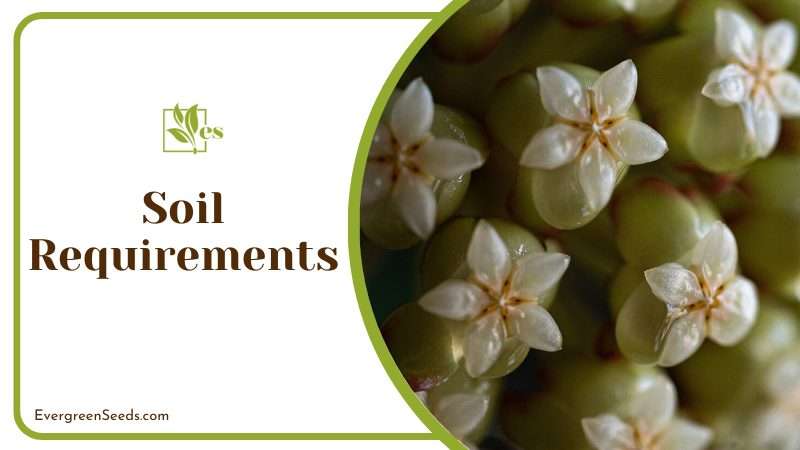
To make sure that the soil will drain well and not become too soggy, you need to be careful about what you add to the soil mixture. Ideally, your soil should be sandy or gravelly with plenty of air pockets to allow good air circulation and space for the plant to extend its roots.
A good soil mixture for Hoya cumingiana should contain some tree bark for the hoya roots to latch on to because, in their natural environment in the wild, these plants often put down roots on trees instead of the forest soil. Your soil mixture should also have some volcanic rock to keep the soil airy.
This allows for good air circulation and prevents the soil from clumping together. If you do not have volcanic rocks, you can use some charcoal pieces instead. Lastly, it is also good to add some organic material like leaf mold to your soil mixture.
 Humidity Requirements
Humidity Requirements
Hoya cumingiana plants usually grow in humid rainforests, so generally, they prefer high humidity levels. However, they can tolerate low humidity, but it is best if you try to simulate ideal growing conditions that closely match their natural habitat.
To do this, try to grow the Hoya cumingiana in a greenhouse if possible. Not only will this help keep them in a humid environment, but it will also keep them in warmer conditions. Remember that these plants cannot survive in frosty conditions, so keeping them in a greenhouse is essential if you live in a place with cold weather.
But if you live in an apartment and plan on growing your Hoya cumingiana plant indoors, then investing in a good humidifier will help you recreate that humid greenhouse environment. If you are on a budget, then a simple hack is to keep your Hoya plant close to other plants and spray the leaves periodically to stimulate the humid environment of a tropical rainforest.
 Fertilizer Requirements
Fertilizer Requirements
Now, you might be wondering if the porcelain flowers have some special fertilizer requirements. All that Hoya cumingiana plants need is a little bit of liquid fertilizer once or twice a month. Don’t overdo it, as synthetic fertilizer can be a little harsh on these plants.
If you still decide to use synthetic fertilizer, then make sure you get one with the right kind of ingredients. The best hoya plant food is one that is high in nitrogen, phosphorous, and potassium. The nitrogen helps keep the leaves healthy and green and gives the plant greener, bushier foliage.
Because phosphorus is known to help hoya plants bloom better, it is a good idea to increase the amount of phosphorous during the flowering season.
Propagation
Let’s talk about propagation now. The good news is that hoya plants are easier to propagate than other plants, so you don’t need to be an expert in gardening to grow yourself a baby hoya plant.
Below, we will discuss the three propagation methods used for hoya plants so that you can pick one that is the most convenient for you.
– Sphagnum Propagation
- First, take a cutting from a mature hoya plant. To do this, you need to find a node on the hoya vine stem. The node is the point from where leaves sprout.
- Once you find a node, make a clean cut across the vine using sterilized garden shears.
- Next, dip the cutting in a rooting hormone. Wax plants normally don’t need this as they root easily, but it is always good to be on the safe side and apply some rooting hormone.
- This helps prevent the cutting from developing a fungal infection.
- Fill a small jar with sphagnum moss and place the cutting in the moss.
- Spray the moss regularly to keep it moist.
- After a few weeks, the cutting will develop roots and will be ready to be transferred to a regular pot with the kind of soil mixture described above.
– Water Propagation
- Follow the same steps as outlined above to get a cutting.
- Place the cutting in a small jar of water and leave it in a warm part of the room.
- Change the water regularly because if the hoya sits in stagnant water for too long, it will die from bacterial disease.
- After a few weeks, the roots will emerge, and your cutting will be ready for a bigger pot.
-Perlite Propagation
- Grab any plastic container and fill it with a layer of perlite at least one inch high.
- Soak the perlite for a few minutes, then throw out the excess water.
- Place your cutting in the damp perlite layer.
- Cover the box with a plastic bag that has a few tiny holes in it to allow some air in. The plastic cover will help to recreate humid conditions that will allow the cutting to develop roots.
– Repotting
Repotting your hoya plant is extremely important to keep the plant healthy. To repot the Hoya cumingiana, change out the soil once every year. As your plant grows bigger, you may also want to move it into a slightly bigger pot so that the roots have more space to grow.
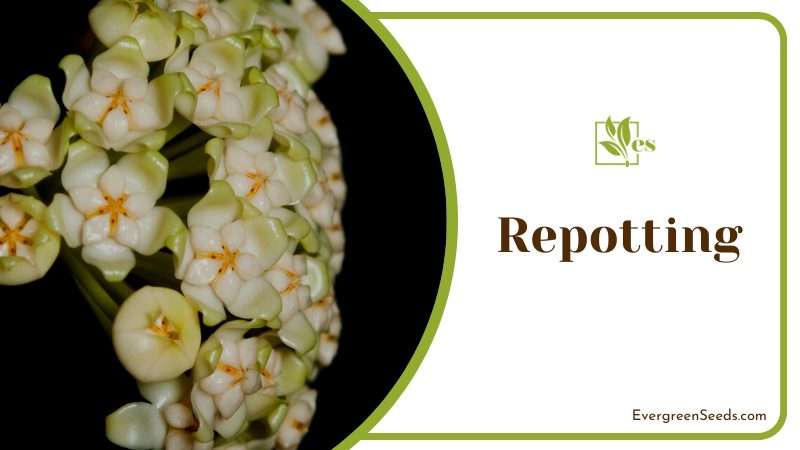
But be careful because you don’t want to make any drastic changes that will stress out the plant. So don’t move it to a very big pot suddenly. Instead, make gradual changes by moving it into a slightly bigger pot than its current one every 2-3 years.
Possible Problems You Will Encounter and How to Handle Them
There are a few problems that you will encounter while growing Hoya cumingiana but don’t worry because these can be easily fixed.
The biggest one is the infestation of mealybugs in their succulent leaves. Other pests that may attack the plant include spider mites, aphids, and thrips. If you notice a white substance near the leaf joints of your plant, then it is a sign that mealybugs are damaging the leaves. To get rid of mealybugs and other pests, simply use a pesticide spray or some alcohol wipes on the leaves for a few weeks, and the bugs will disappear in no time.
The second problem you might face with your hoya plant might be getting it to climb. Simply use a trellis or a bamboo stick to encourage the hoya plants to become climbers. Trust us; they look beautiful as climbing vines.
Final Note:
We’ve enumerated all the tips needed to grow these beautiful exotic plants.
Let’s review the essential tips for planting and growing healthy Hoya cumingiana:
- Hoya cumingiana is very easy to grow and doesn’t have any special care requirements.
- Just be careful not to overwater the plant.
- Plant it in well-draining soil.
- It is also very easy to propagate.
- There are three propagation methods for Hoya cumingiana: sphagnum propagation, water propagation, and perlite propagation.
- Keep it in a well-lit and humid environment.
- Give it a little NPK fertilizer.
Check out our guide on how to care Hoya Australis succulent.


